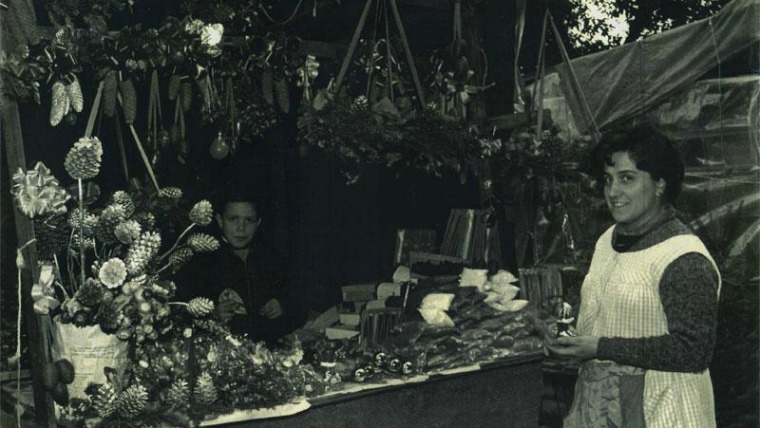12 curious facts about the Santa Llúcia Fair.
The Santa Llúcia Fair is the city’s oldest Christmas market: the earliest recorded reference to it dates back to 1786. Its long history has made it a key figure in dozens of stories, customs and curiosities well worth bringing together.
Its earliest mention goes back to 1786, in a chronicle written by the Baron of Maldà in his ‘Calaix de sastre’ diaries. There he talks about sales of nativity-scene houses, clay and paper-mâché figurinees, images of saints and shepherds, oxen, mules and other beasts.
– The folklorist Joan Amades confirms the fair’s first appearance in 1786.
– Not even disasters such as the terrible epidemic of yellow fever that afflicted Barcelona in 1860, could stop the market from being held.
– It was popularly known in the 19th century as the ‘Girls Fair’: it was believed to have been a good place for matchmaking seeing as so many unmarried girls used to go there. And that is why girls from the local region would come over to the fair smartly dressed, sporting jewels and accompanied by their mother, to see if they could find a suitor.
– In the old days, paper-mâché-doll sellers in the nativity-scene section used to animate their ware by pulling them on a string. Despite having nothing to do with nativity scene, they entertained children and helped to draw in the crowds.
– The nativity-scene fair only lasted for three days in the 19th century: for the Virgin Mary and St Lucy, in Plaça de la Catedral, and St Thomas, in Plaça del Pi, Plaça de Sant Josep Oriol anrd Plaça del Born.
– The materials used for creating the landscape, such as cork, moss, myrtle and other herbs, came from another fair, on the steps of the Cathedral. Our ancestors saw them as two distinct fairs; one for nativity scenes and the other for herbs.
– Some pre-20th century documents point out now true nativity-scene makers would not display their creations until Christmas eve, as they considered it disrespectful to re-enact the mystery of the birth of the baby Jesus before its anniversary date.
– It was at the start of the 20th century, to judge by extant photographs from the period, that fair’s sellers would mount their stalls by using a large piece of wood above which were since shelves on two capitals. They protected their ware with a rudimentary canvass roof, water-proofed by linseed oil and lit up by oil or carbide lamps.
– Ramon Amadeu, one of the most outstanding figurine makers of Catalan nativity scenes, had a stall at the fair.
– A poem by Josep Maria de Segarra from 1924 mentions the fair. He explains that it is held in Plaça Nova, that he will be going there with his beloved and that the products on sale there smell of mountains. He also lists what he will be buying to make his nativity scene: moss, extracts of strawberry trees, a miller’s wife figurine, a sheep and a shepherd.
– This year’s fair will have 287 stalls distributed along four different sectors: 123 will be dedicated to selling figurines and nativity scenes, 96 to selling household plants and decorations, 64 to craft works and 4 spaces for selling music instruments.




